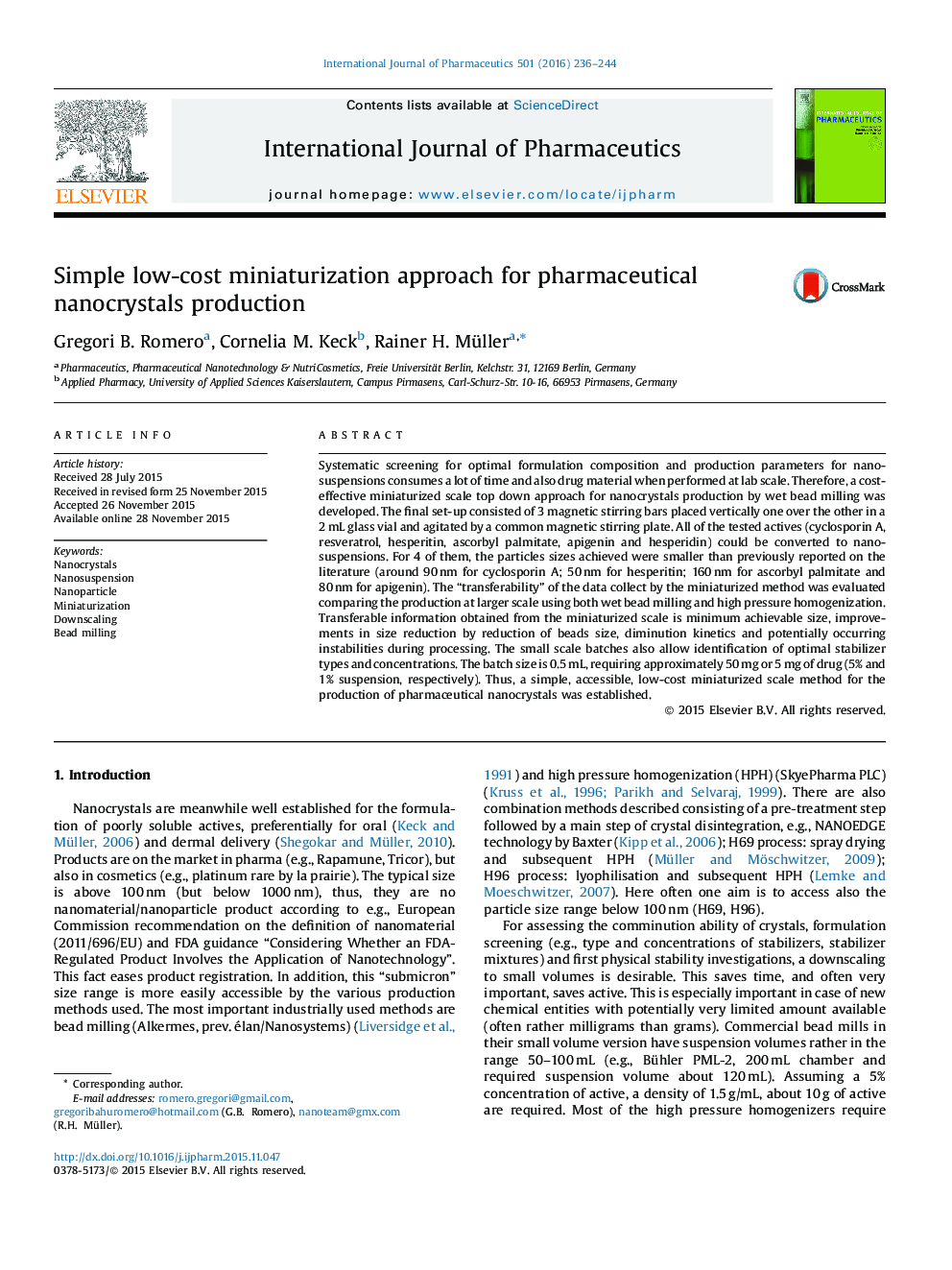| Article ID | Journal | Published Year | Pages | File Type |
|---|---|---|---|---|
| 2501106 | International Journal of Pharmaceutics | 2016 | 9 Pages |
Systematic screening for optimal formulation composition and production parameters for nanosuspensions consumes a lot of time and also drug material when performed at lab scale. Therefore, a cost-effective miniaturized scale top down approach for nanocrystals production by wet bead milling was developed. The final set-up consisted of 3 magnetic stirring bars placed vertically one over the other in a 2 mL glass vial and agitated by a common magnetic stirring plate. All of the tested actives (cyclosporin A, resveratrol, hesperitin, ascorbyl palmitate, apigenin and hesperidin) could be converted to nanosuspensions. For 4 of them, the particles sizes achieved were smaller than previously reported on the literature (around 90 nm for cyclosporin A; 50 nm for hesperitin; 160 nm for ascorbyl palmitate and 80 nm for apigenin). The “transferability” of the data collect by the miniaturized method was evaluated comparing the production at larger scale using both wet bead milling and high pressure homogenization. Transferable information obtained from the miniaturized scale is minimum achievable size, improvements in size reduction by reduction of beads size, diminution kinetics and potentially occurring instabilities during processing. The small scale batches also allow identification of optimal stabilizer types and concentrations. The batch size is 0.5 mL, requiring approximately 50 mg or 5 mg of drug (5% and 1% suspension, respectively). Thus, a simple, accessible, low-cost miniaturized scale method for the production of pharmaceutical nanocrystals was established.
Graphical abstractFigure optionsDownload full-size imageDownload high-quality image (194 K)Download as PowerPoint slide
